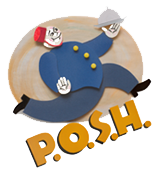Antique Silverplate Swan Toast Rack
Antique Silverplate Swan Toast Rack
$250.00
Since ancient times, swans have been associated with grace, beauty, fidelity, transformation, wisdom, and royalty, featuring in myths and stories around the world. Their high status is likely to have come about because of their perceived beauty and natural behavior; strong and aggressively protective of their young but at the same time graceful and elegant on the water. Considered solitary creatures, they famously couple for life and are monogamous throughout.
Found at market in England, we have fallen under the serene spell of this gorgeous swan toast rack. Elegant and refined, it is of course designed to neatly hold toast ensuring that each slice remains perfectly crisp through the entire breakfast service.
Perfect for toast, we also love turning a toast caddy into our very own filing system. Whether it holds your mail, your treasured photographs or even fingertip towels in a powder room, it is certain to bring beauty and grace wherever it is found.
Strictly one of a kind and subject to prior sale. At time of listing, two toast racks are available; while matching closely they do vary very slightly in size by less than 0.25" so are not a perfect pair. Both in excellent restored antique condition. 7"L x 3.5"W x 5"H.
*History of swans adapted from and courtesy of Smithsonian magazine's, "The Fascinating, Regal History Behind Britain's Swans"
Learn More About Toast Racks
Despite the fact that the consumption of toast dates back to the Roman era ("Tostum” being Latin for "scorched”), the development of the toast rack did not happen until the 18th Century. Up until this point any innovation revolved around the making of the toast rather than the presentation; this development took us from the humble hot stone, on to the wire frame used to toast bread above fire, then to the toasting fork (which was greatly popular during the Victorian era) and finally to the toaster, introduced in 1893 by the British Crompton company.
It is claimed that the first toast rack was crafted in the 1770’s with them first appearing on the breakfast table around the 1780’s as part of the general refinement of dining customs among the middle classes.
This concept of the perfect dry toast (and the idea that room temperature, dry toast was preferable to warm but soggy toast) was echoed a lot in 18th and 19th century cook books such as Mrs. Beeton’s Dictionary of Every-Day Cookery (1865) in which she writes "to make dry toast properly, a great deal of attention is required; much more, indeed, than people generally suppose.” and then goes on to assert that the answer, of course, is the implementation of the toast rack.








